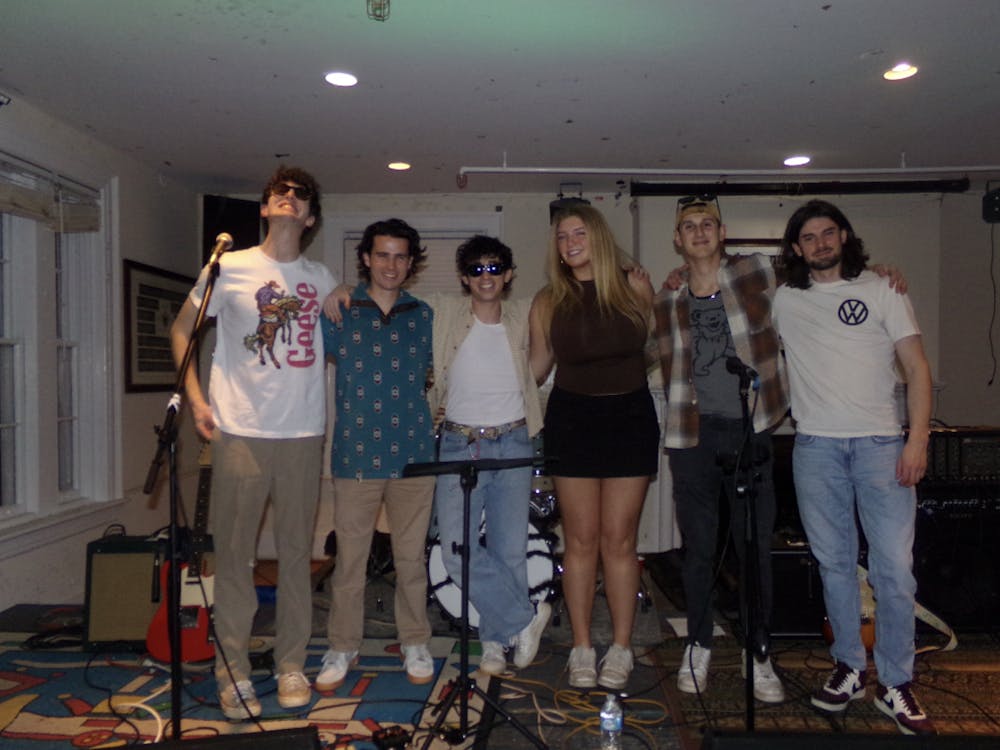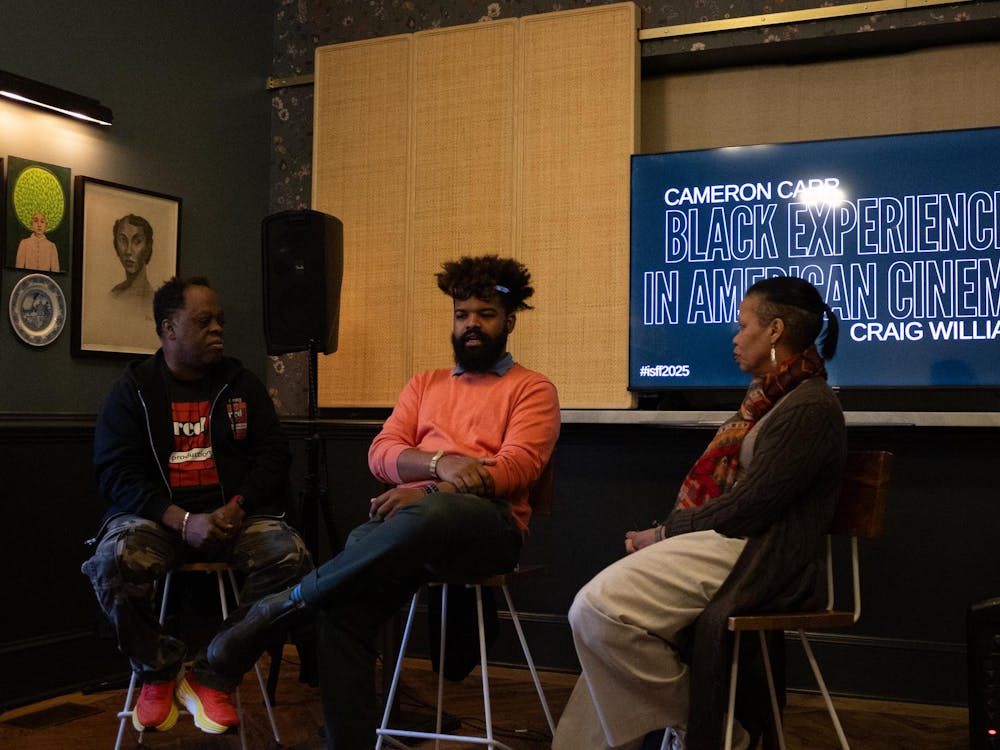Old Cabell auditorium Friday night played host to a concert of the most peculiar sort, titled “TechnoSonics XIII: Music & Politics.” Technosonics, a course started at the University in 2006 by Assoc. Music Prof. Matthew Burtner, teaches students a variety of tools and music composition techniques, analyzing digital music and sound art.
Even as a student currently enrolled in the course, I had no idea what to expect walking into the Old Cabell auditorium. The title of the evening’s show alone seemed bizarre — I was curious to see and hear just how the program’s two divergent themes would intertwine in the technosonics setting.
As I entered the hall, the unfamiliar sounds that filled my ears immediately dashed any remaining expectations I might have had. The solo act on stage — musician Christopher Adler and his khaen, a free-reed bamboo mouth instrument from Laos and Northeast Thailand — proved the next hour and a half or so would not be your typical orchestral concert. In the opening piece, “Epilogue for a Dark Day,” Adler, both the composer and performer of the piece, played two seemingly very simple notes repeatedly for about 15 minutes. As the noises continued — while students around the auditorium mumbled “I think we’ve heard this one before” — the two alternating notes morphed ever so slightly into a set of different notes, drawing the piece to a close and giving the performance an amusing twist.
What came next, however, somehow managed to take a totally different turn in the sound arena while simultaneously stretching our understanding of music in the same way Adler had. This act featured Burtner on the saxophone, violinist Mark Menzies, Adler on the piano, Morris Palter on percussion and Maxwell Tfirn on a computer. Together, the five men and their instruments used a variety of both short and longer sounds to create some abstract form of “music.” Third-year Engineering student Clint Boyer said the odd mélange of sounds at the beginning of the piece seemed as though the players were “transporting [the audience] to a strange dystopian universe.” After 15 minutes and seven movements of the piece titled “(dis)Sensus,” Burtner played the final note of his work by squeaking a rubber duck.
The following act only furthered the confusion of the students in the audience of the auditorium. This act, titled “Where is My Voice?” involved the piece’s composer Mara Helmuth, a microphone and a computer. Based on the poem “Vet’s Sangha: 2005” by Steve Sunderland, Helmuth used the computer to play samples of the poem while incorporating eerie melodies with her own voice. The poem, initially created to bring Vietnam veterans, protestors and refugees together, stems from the belief that writing has the power to bridge cultural gaps. The combination of ethereal sounds and haunting political memories in Helmuth’s performance proved both eerie and mesmerizing.
After a brief intermission, the final two acts, “Lullabies & Protest Songs, Suite No. 3” by Ted Coffey and “Respecting the First” by Judith Shatin, proved equally dissimilar to the archetypal orchestral concert, despite the fact that both acts featured conventional orchestral instruments such as the violin, piano, viola, cello and percussion.
The concert provided the musicians and attendees an opportunity to reflect on the dynamic interactions of music and politics, generating an abstract and unconventional experience. If you feel so intrigued, when the next Technosonics concert occurs, you ought to go and see for yourself; perhaps you will enjoy interpreting the confusion of sounds.






